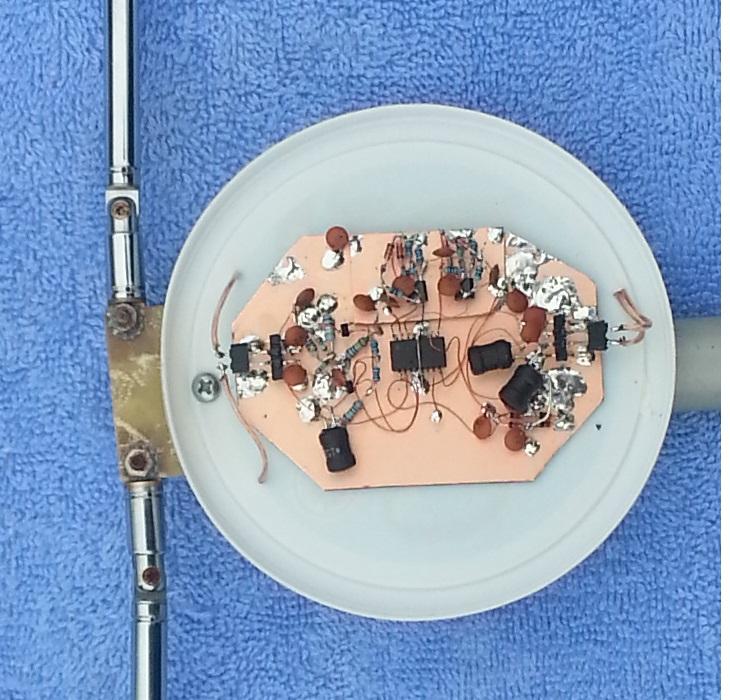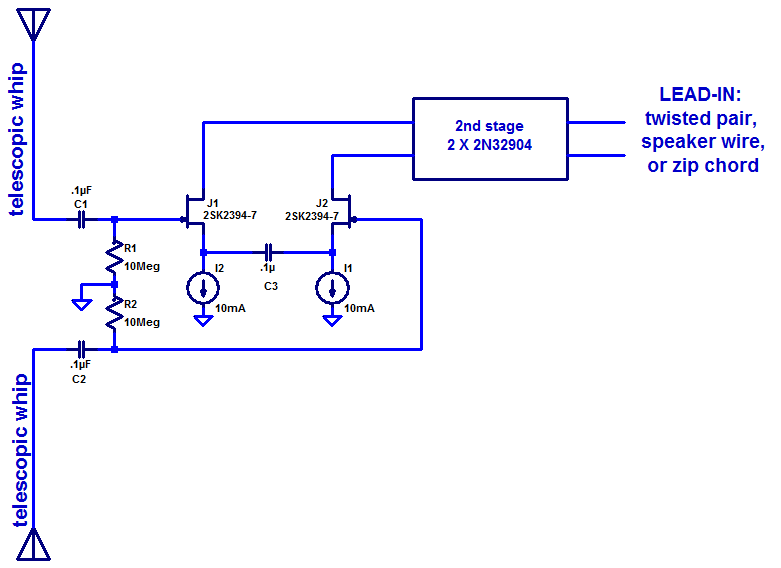Unlike other E field active antennas used with KiwiSDR, the prototype pictured below differs in three fundamental ways:
1) The lead-in cable is speaker wire. Compared to coax cable, speaker wire is less expensive, easier to terminate and spice, and simpler to route. For example, 24-gauge speaker wire can be passed through a closed window without harming the window or creating an air leak. Note that signal amplification in the antenna overcomes the higher loss of speaker wire.
2) Two telescopic aerials form a short dipole and drive a differential amplifier. This results in strong attenuation of common mode noise on the lead-in cable. The dipole nature of the antenna also permits orientation of the aerials to cancel locally generated noise, such as the noise from broadband-over-power-line.
3) The antenna amplifier can still operate with a supply voltage as low as 2.5V without significant degradation in dynamic range. Hence the supply voltage at the bias T (the device at the receiver where supply voltage is injected onto the two wires of the lead-in cable) can be as little as 3.3V and still allow 0.8V of voltage drop along the cable’s length. The 3.3V can be derived from the same supply powering the KiwiSDR. A separate 12V supply is not required.
Over the next few weeks, I intend to lay out a printed circuit board, mount the board in a better case, and publish the schematic here along with some performance results. Stay tuned!



